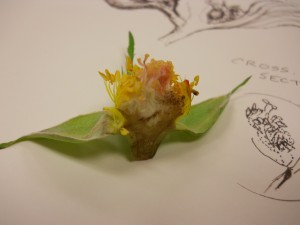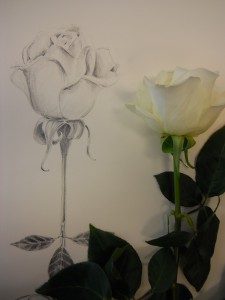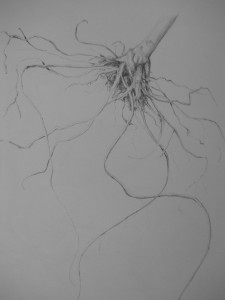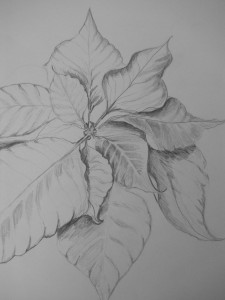Botanical Illustration and the "Slow Art" movement
by Paula Blair Dabbs, Volunteer, Lewis Ginter Botanical Garden
If the “slow food” movement is about being mindful of what you eat and appreciating it more, then botanical illustration might be considered part of the “slow art” movement. It doesn’t offer the instant gratification of digital photography, but rather the rewards of patience that come with truly appreciating and seeing the beauty in nature. I signed up for my first botanical illustration class at Lewis Ginter Botanical Garden because I wanted to go back to the “roots” (no pun intended) of my art and do some deliberate and slowly crafted drawings. I have always loved the mediums of graphite, watercolor, and pen & ink. 
I walked into Celeste Johnston’s “Beginning Botanical Illustration” class and immediately felt comfortable. My classmates were there because they loved art, or flowers, or both. We learned that Botanical Illustration means keenly observing the natural world and creating an accurate representation of it. Our first class had us literally starting with the roots – our first assignment was to draw the roots of a Poinsettia plant. After some initial skepticism, my classmates and I were all pleasantly surprised by how well our finished drawings turned out. (Never fear – we went on to stems, leaves and finally the gorgeous blooms of this favorite Christmas plant.)
My botanical illustration classes have sharpened my skills in observation, art techniques, and understanding of flowers and plants. Next up will be Celeste Johnston’s Plants and Pollinators for Botanical Artists class, held at the Garden in July. For a full listing of the Garden’s art classes, please visit our website.
Although he was not a botanical illustrator I think of the words of Vincent Van Gogh when I come to the garden for an art class . . . .“If you truly love nature, you will find beauty everywhere.”


